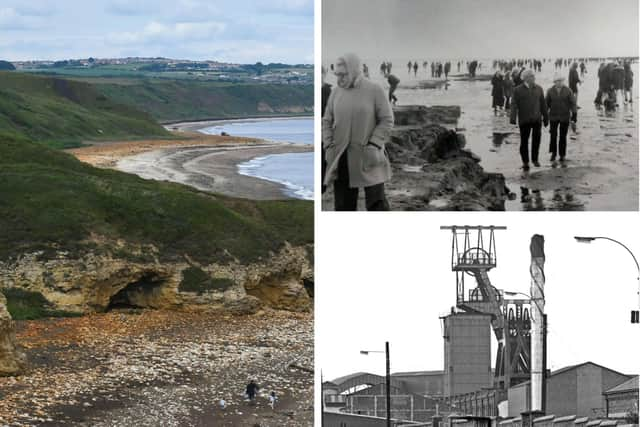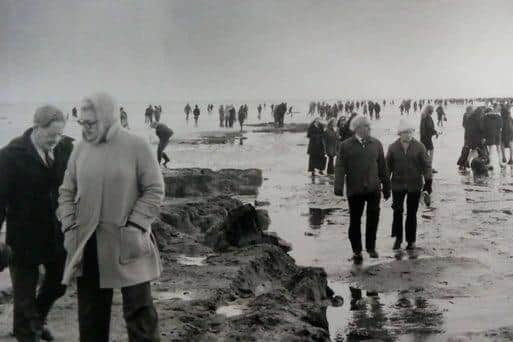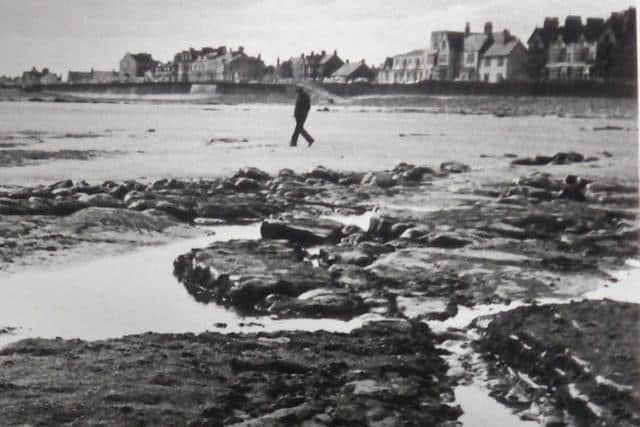The day bones were found of extinct woolly beasts which roamed in Hartlepool and East Durham 11,000 years ago
and live on Freeview channel 276
But one discovery in the Hartlepool area had scientists enthusing because it dated back more than 11,000 years.
Historian and researcher Graeme Harper reports.
It happened in November 1938 at Mr Gallimore’s sand and gravel quarry in the village of Brierton.
Advertisement
Hide AdAdvertisement
Hide Ad

A fossilised bone, 12 inches long and 5 inches wide, was unearthed and sent to Grays Museum where it was examined by Castle Eden based geologist Dr CT Trechmann.
He was no amateur. He was an established expert with an international reputation.
It was the leg bone of a long extinct breed of woolly rhinoceros Rhinoceros antiquitatis that once frequented Europe and Asia but had died out during the last Ice Age around 11,700 years ago.
This was later confirmed when Trechmann took it to Natural History Museum in London.
Advertisement
Hide AdAdvertisement
Hide Ad

Unlike modern rhinos, this particular species were covered in thick hair to help them survive the freezing temperatures of the ‘mammoth steppe ‘that stretched from western Europe through Canada and China.
At some point one had perished much closer to home –about as most northerly as ever they ever got.
In a Northern Daily Mail report in December 1938, Dr Trechmann recommended that ‘the Brierton graves should be watched by workmen for more bones and also possible chipped implements.
‘The only trace of man at this period so far North is a piece of chipped quartzite rock I found some years ago in glacial gravels on the coast a little south of Blackhall Rocks.’
Advertisement
Hide AdAdvertisement
Hide Ad

Trechmann had already discovered a fossilised vertebrae of the extinct elephant species Elephes meridionalis – or southern mammoth - in clay opposite Horden Colliery.
Dr Charles ‘CT’ Trechmann was an eminent geologist who specialised in research on the Pleistocene era in North East England but also published papers on New Zealand and the West Indies.
He was the son of a successful Hartlepool cement magnate and became financially independent on the death of his father. He devoted himself to his scientific pursuits.
In 1957, he was awarded the RH Worth prize by the Geological Society for his work on east Durham and his study of ‘the petrified forest’ at Seaton.
Advertisement
Hide AdAdvertisement
Hide Ad

He remains one of the most important scientists to emerge from the town.
Trechmann wasn’t the first to discover interesting animal fossils in town. In 1860 a piece of mammoth tusk had been found when the docks were being constructed and was for a time displayed in the Atheneum before being lost.
Nearly a hundred years later in Stockton, a tooth once belonging to a hippopotamus was spotted in another gravel pit in 1958. This still represents the most northernmost record of any hippo species ever found.
A little further south in Kirkdale near Kirbymoorside in the Vale of Pickering, a mass of fossilised animal bones was found in a previously unexplored cave in 1821.
Advertisement
Hide AdAdvertisement
Hide AdThese included many surprising species such as elephants, hippos, rhinos, large mammals and exotic birds normally associated with more tropical climates.
It became clear that they had been living in the region at the time and that the cave was home to the local scavenging hyenas.
We thank Mr Harper for another superb contribution from Hartlepool’s past.
We would love you to share your own stories of Hartlepool’s past by emailing [email protected]